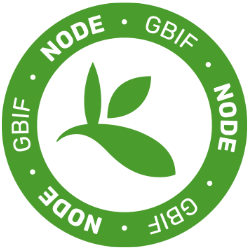
Dear iDigBio Enthusiasts,
iDigBio is halfway through its sixth year and has many exciting plans for 2017. Moving forward, we will continue to work with the collections community to facilitate digitization, mobilization, and use of specimen data, while continuing to enhance the data search portal. iDigBio’s priorities are to work with additional collections to increase digitization and data publishing, promote the use of collections data in research and education, and work on the long-term sustainability of the collections network. As 2016 comes to an end, we look back on what iDigBio and you, the digitization community, have accomplished.
Digitization Training & Mobilization
iDigBio continues to build the digitization and research capacity of the biodiversity community by hosting workshops on a range of topics such as georeferencing, data mobilization, Software Carpentry, and imaging. The Paleo Digitization and Symbiota working groups hosted webinar series in 2016 focusing on digitization issues specific to their communities. iDigBio documents all of these presentations, recordings, and other products from events on the Wiki to ensure that the shared knowledge and accomplishments from these events become resources for the entire collections community.
While we work to help mobilize collections from all of our TCN and PEN partners, we are also continuing to reach out to data repositories around the world, such as Canadensys and the Consortium of Pacific Northwest Herbaria. iDigBio’s data mobilization team uses the iDigBio IPT to serve providers with a mobilizing platform to share data with iDigBio as well as assisting them with GBIF registration.
Data Access via iDigBio Portal
As 2016 comes to a close, the Portal has 74 million specimen records and 17 million media records from 884 recordsets and is continually growing. Please, visit the portal and provide feedback on the look and features. If you are new to the portal, we recommend you read through the portal tutorial. The December 2016 Research Spotlight also provides information on how to download data from iDigBio. The taxonomy backbone of the portal is now the same as the GBIF backbone, enabling iDigBio to provide improved indexing and searching within taxonomic fields. We also have some new improvements to the portal interface that will be coming online in 2017! However, the portal isn’t the only way to get access to our data. If you want to develop applications or automated analysis pipelines, you can use our APIs or our Python or R packages.
Applications for Research & Education
The Research Spotlight, a monthly blog highlighting the use of natural history collections and their data for research, was inaugurated in 2016. Share your biodiversity data research use story with the iDigBio team and community in 2017! The iDigBio Research webpage also saw some new changes, with Research Collaborations and a new Learning Center providing useful resources for utilizing digitized biodiversity data.
Specimen data served by iDigBio are now making their way into numerous publications, 20 in 2016 and all discoverable in the iDigBio Medeley Public Library, on a broad range of topics from basic taxonomy and new species descriptions to niche modeling, ecological research, and data mining for research on extant and fossil Equus. We are excited about the creative ways in which the data are being used and look forward to future innovations by the community!
iDigBio’s Education and Outreach Working Group was very active in 2016, hosting a webinar series and planning two education-related workshops. The education team has also formed new partnerships with initiatives including QUBES (Quantitative Undergraduate Biology Education and Synthesis), BLUE (Biodiversity Literacy in Undergraduate Education), and Kurator. Our public participation partner, WeDigBio, hosted the second annual Worldwide Engagement for Digitizing Biocollections event resulted in over 35,000 completed transcription tasks and 48 onsite events held in four countries: US, UK, Australia, and India.
iDigBio is also reaching out broadly to scientific communities by hosting seminars and workshops and giving presentations at professional society meetings. iDigBio participated in many meetings in 2016, including Ecological Society of America, Geological Society of America, International Congress of Entomology, and Botany2016. Invite us to the meeting of your favorite society!
Keep in Touch
We invite you to stay up-to-date with iDigBio in 2017 by visiting http://idigbio.org. When visiting the website, be sure to monitor the constantly evolving Wiki for content specific to digitization and collections, read press releases for ADBC-related news, and view reports for summaries of past events and publications related to the iDigBio community. Visit the iDigBio Calendar to view the upcoming workshops, webinars, and other iDigBio-related events coming in 2017. Stay connected with iDigBio by “liking” the project’s Facebook page, following iDigBio on Twitter, and subscribing to the e-newsletter. Anyone can join the conversation in one of the many topic-based working groups or listservs provided by iDigBio, and we invite you to submit a blog post about your creation, discovery, or use of digitized biodiversity data.
Thanks to all who have contributed data to the portal, collaborated in a TCN, and/or participated in one of our events and webinars in 2016. iDigBio hopes everyone continues to be involved and has a fantastic and productive 2017!
Best Regards from the UF and FSU iDigBio Team
Larry Page, Director







